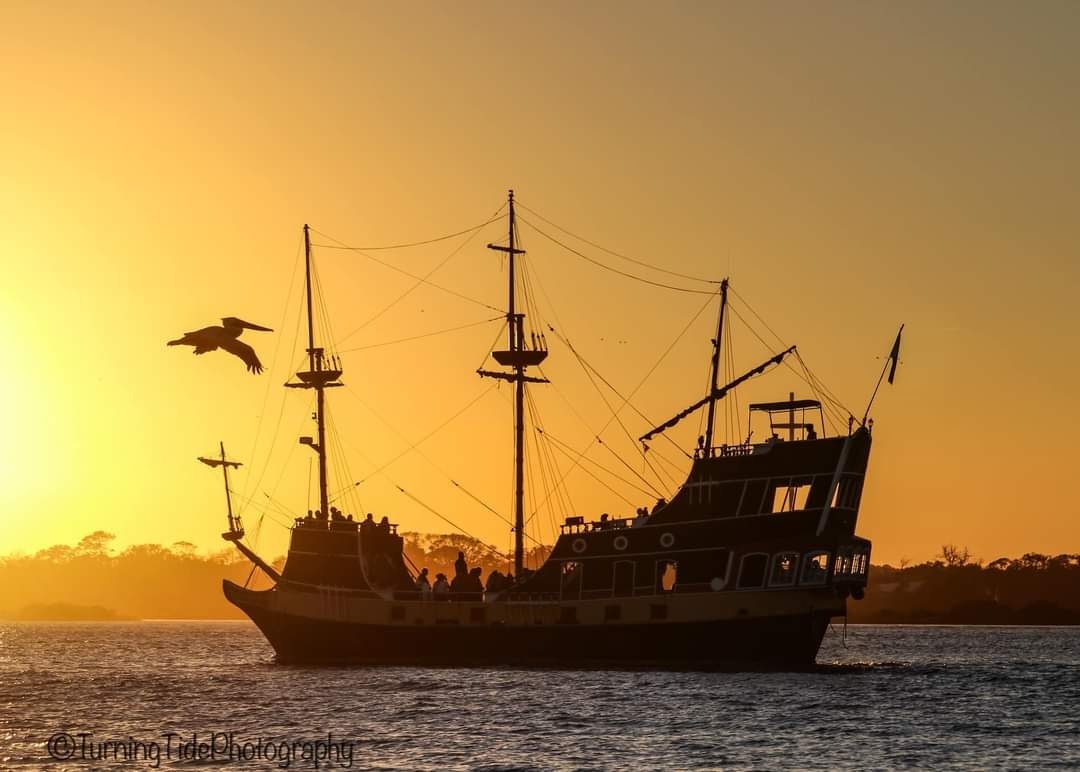Seasonal Wildlife Spotting Tips During Your Sunset Cruise in St. Augustine
Embark on a sunset cruise in St. Augustine where coastal waters come alive with seasonal wildlife. Discover what creatures to expect each time of year and practical tips to make your wildlife spotting adventure both thrilling and successful.
Arrive Early for Best Light
Plan to board at least 30 minutes before sunset to catch the golden hour and maximize wildlife sightings as the environment transitions.
Bring Binoculars and Zoom Lens
Wildlife often stays at a distance; good optics enhance your ability to observe without disturbing natural behavior.
Dress in Layers
Coastal temperatures can shift quickly after sunset—wear layers to stay comfortable during cooler evening breezes.
Stay Quiet and Patient
Wildlife reacts to noise and sudden movements. Maintain a respectful silence to improve your chances of spotting elusive species.
Seasonal Wildlife Spotting Tips During Your Sunset Cruise in St. Augustine

Black Raven's Tropical Sunset Cruise
2 Hours
Set sail on the Black Raven Pirate Ship at sunset and watch as the sky bursts into colors over historic St. Augustine. Enjoy live music, dolphins, and refreshing drinks for an unforgettable evening on the water.
Experience the fading light dipping below the horizon while the waters around St. Augustine come alive with movement—this is the magic hour for wildlife enthusiasts setting sail on a sunset cruise. The coastal currents push and pull, daring you to spot the fleeting forms that emerge in this fiercely dynamic environment. Whether it’s the swift flight of a reddish egret skimming the waves or the slow, deliberate surfacing of a manatee, each season rewrites the script of what nature has on offer.
Spring breathes life into the waterways as migrating shorebirds return. Look for roseate spoonbills and ospreys hunting over the salt marshes. The air hums with expectation, as dolphins sometimes dance alongside the boat, curious yet respectful of your quiet presence. Summer shifts the stage toward nocturnal creatures awakening early, with the warm air sometimes drawing in sea turtles toward nesting beaches—though from the water they appear like dark, gentle giants.
Fall introduces a changing palette, not just in foliage but in behavior. Many bird species prepare for their migrations, and the skies become a gallery of kites and falcons tracing thermals. Winter cuts the frenetic pace down, but the wildlife remains steady. Manatees cluster in warmer springs nearby, and bald eagles patrol with a quiet claim over their frozen perches inland.
For practical success, arrive 30 minutes before sunset. Bring binoculars and a camera with a decent zoom; the changing light calls for quick adjustments to settings. Dress in layers as the temperature can drop swiftly once the sun dips below the edge of the water. Hydrate adequately and keep an eye on the weather—St. Augustine’s coastal winds can sharpen without warning.
The boat's captain, steeped in local knowledge, guides the vessel toward known hotspots based on the season. Stay ready: even the calmest water can ripple with the splash of a mullet or the flash of a tarpon hunting. Bring patience and a respectful gaze, for this wildlife is a force that remains fiercely itself, neither hurried nor bound to our schedules.
Your evening on this cruise balances discovery with the quiet thrill of respecting a wild world that shifts beneath a deepening sky. It’s as much about who you see as about listening to the water push, the birds cry, and the winds whisper, inviting you into their rhythm.
Nearby Trips
All Adventures
Boat Charters
Water Activities
Adventures near St. Augustine
Discover the unique and memorable adventures that make St. Augustine special.
Frequently Asked Questions
What types of wildlife are commonly seen during the sunset cruise?
Depending on the season, expect to see a variety of shorebirds such as herons, egrets, and roseate spoonbills, as well as dolphins, manatees, and sometimes sea turtles near nesting sites in summer.
Is the cruise suitable for children and seniors?
Yes, the cruise is gentle and mostly seated, making it accessible for all ages. However, bring a jacket for cooler evenings and ensure children can stay seated safely.
How does the season affect wildlife visibility?
Seasonal migrations and breeding patterns greatly influence wildlife presence. Spring and fall are best for migratory birds, summer highlights sea turtle nesting, and winter offers manatee sightings in warm water refuges.
Are there opportunities to learn about the local ecosystem during the cruise?
Most tours include guides who share insights on local wildlife, tides, and the health of the coastal habitats, enriching your understanding of this fiercely natural environment.
Can wildlife be spotted without disturbing it from the boat?
Yes, guides navigate carefully to minimize disturbance. Passengers are encouraged to stay quiet and avoid sudden movements to maintain natural behavior among animals.
What should I do if weather changes suddenly during the cruise?
Operators monitor weather closely. If conditions deteriorate, they will return to port promptly. Dressing in layers and bringing rain protection can help you stay comfortable.
Recommended Gear
Binoculars
Essential for spotting animals at a distance without disturbing them.
Light Jacket or Layered Clothing
Keeps you comfortable during cooler, breezy evenings after sunset.
Water Bottle
Staying hydrated is crucial, especially during warmer months and humid conditions.
Camera with Zoom Lens
Allows you to capture wildlife without getting too close or startling animals.
Local Insights
Hidden Gems
- "The quiet view from the Matanzas River bridge reveals manatees resting in warm water pockets."
- "A small inlet near the Castillo de San Marcos often hosts osprey nests, visible during evening cruises."
Wildlife
- "Look for the elusive limpkin, whose ringing call often goes unheard amid the marsh."
- "Keep an eye on the swirling mullet schools near the river’s bends—both an indicator and a magnet for larger predators."
History
"St. Augustine’s waterways have been vital since the 16th century, serving as lifelines for fishermen and explorers. The area's natural resources shaped early settlement patterns and continue to support local biodiversity."
